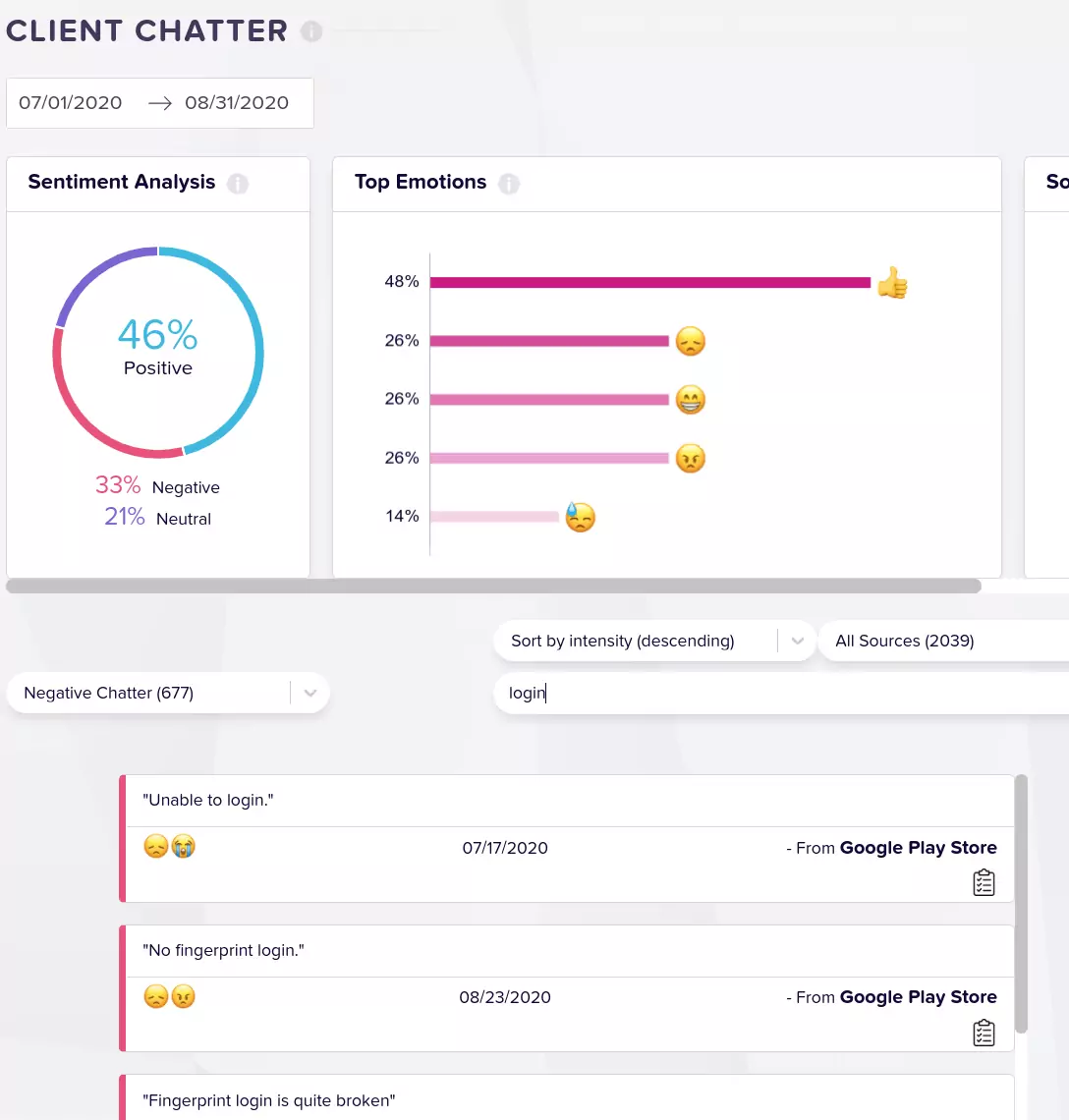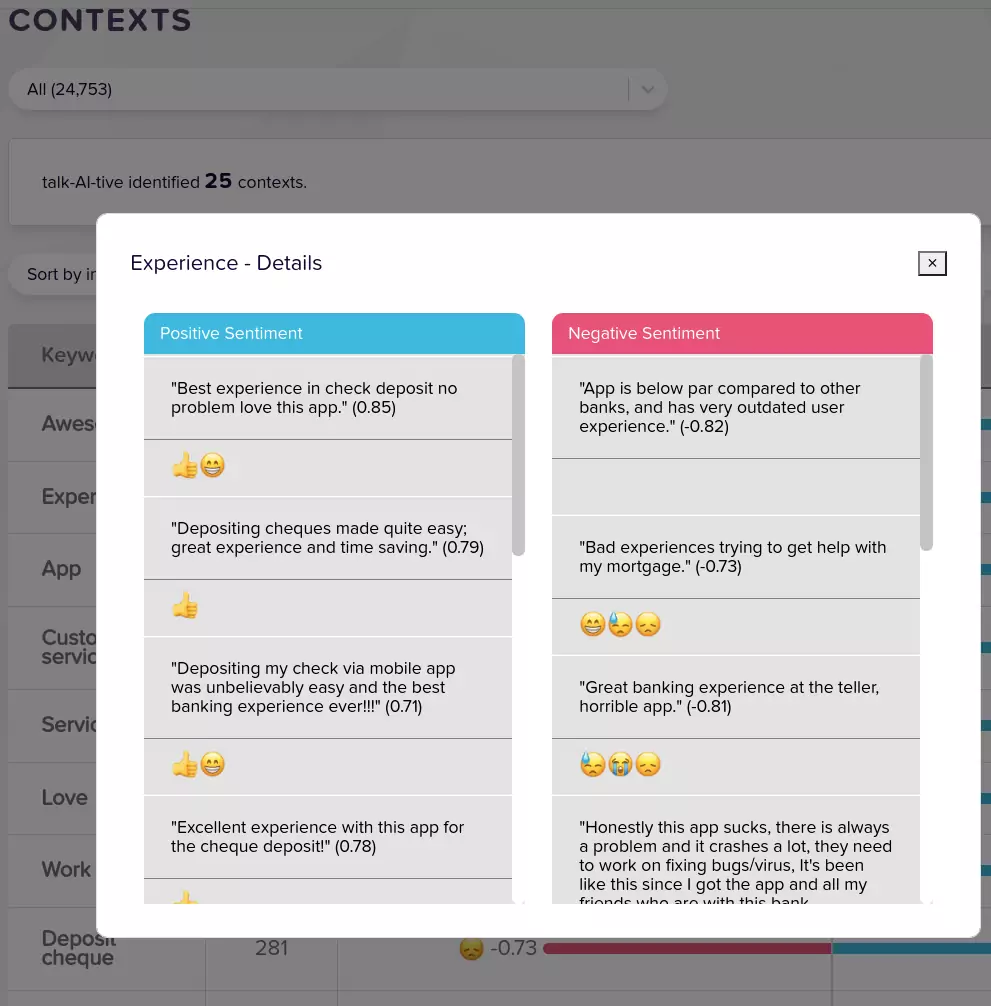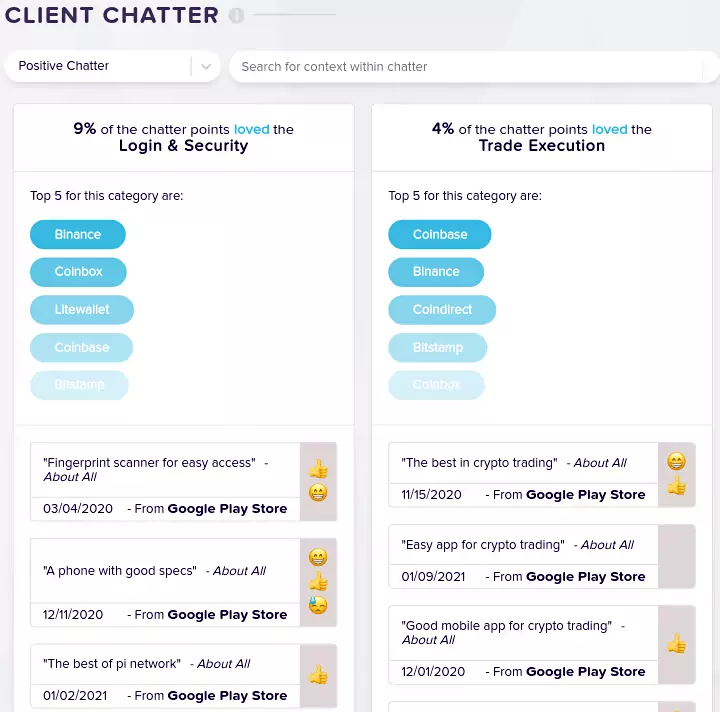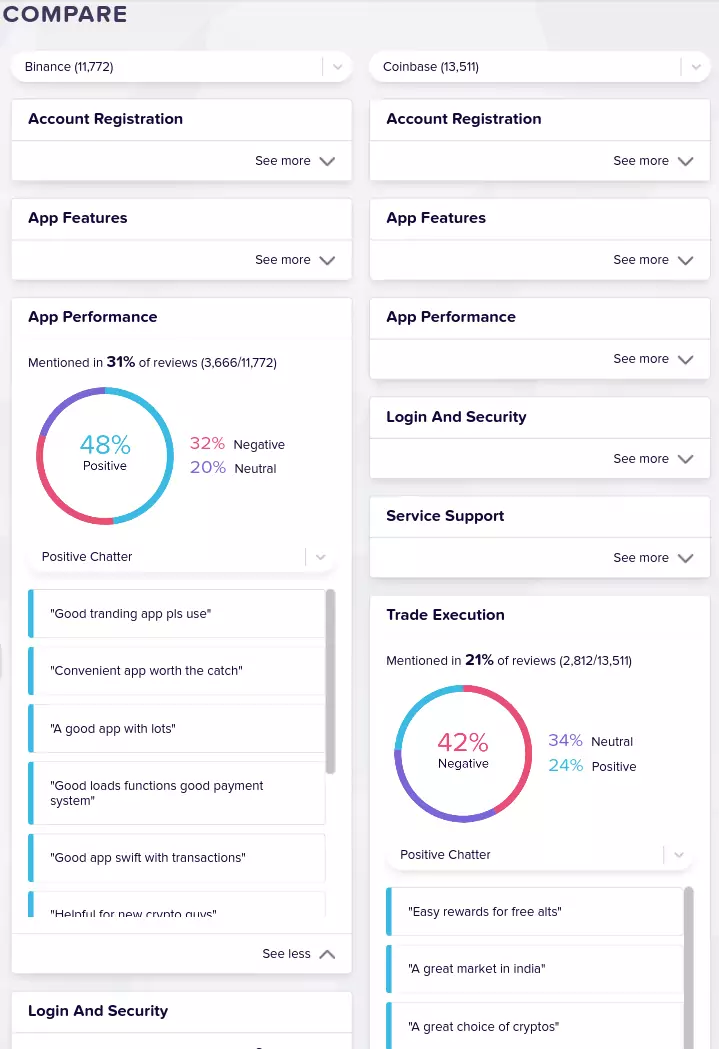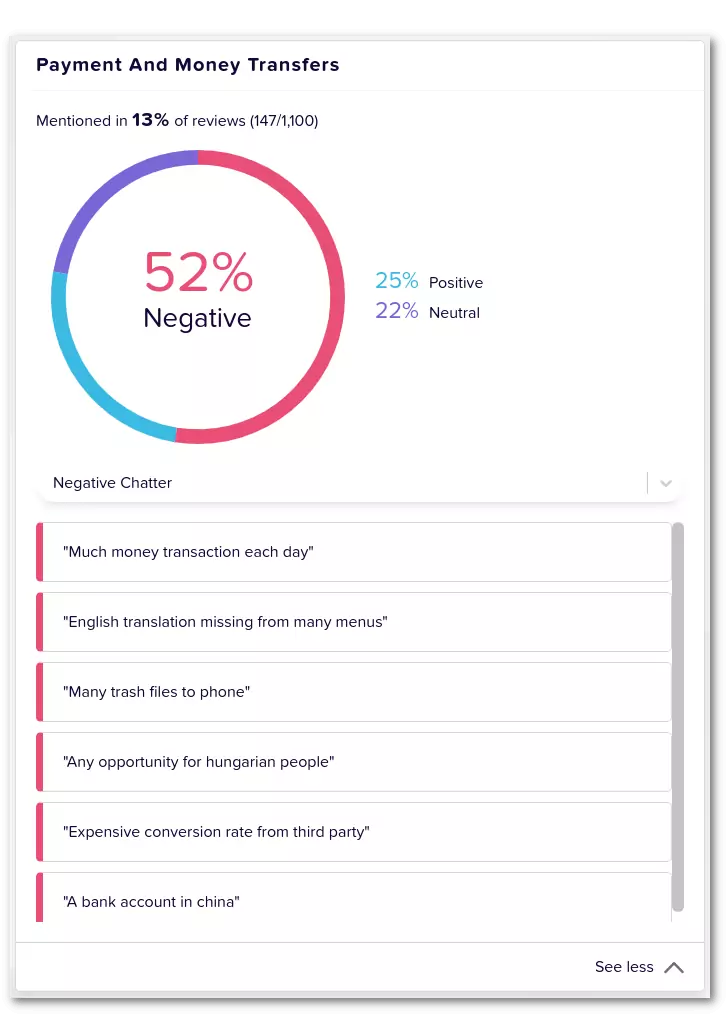What Do You Do With Collected Reviews And Social Chatter?
Over the last 6 months we have processed over 2 million reviews
from these NPS campaigns and helped our clients find focus areas
related to "knowledge gaps" with delivery or specific order
management journey points which the customers are expressing
as part of the customer experience. Customer experience is a
moving target, and changes as the preferences of your customer
base. talkAItive is an ideal tool to keep a pulse on those
transient emotional contexts related to your customer experience.
E.g. Attached image shows a time slice and the customer
chatter related to the negative context of “Login”.
In this time slice "Login" is related to a peak in negative
sentiment between July 2020 and August 2020, and "Login", as for
any similar experience, is a key step measured for usage
friction. Now you have another angle to measure the friction
or ease (think CES - customer effort score)!
We believe that your new digital reality deserves brand new
customer feedback intelligence. One that is adept at listening
first and recommending insights which are impacting your brand
from both positive and negative perspectives. At the risk of
oversimplifying, we see building this intelligence capability
as a three step process:
First, you need a continuous flow of chatter from a myriad of free
online channels available to businesses both virtual and physical,
for example, Twitter handle, Facebook pages or chat bots. Users tagging your
brand across social networks enable turn-key, low cost channels.
Second, you need talkAItive to keep processing this chatter and help
you to maintain an active pulse on your customer’s emotions. Just
collecting the feedback and extracting most frequent sentiment terms
does not inform you of emotions and the contexts within which they
were expressed. talkAItive extracts what they said about their
experience related to a given product, at a given time, in a given
location.
Third, you pick and apply these emotional contexts to enhance your
engagement, using emotionally intelligent contexts across key customer
touch points. E.g. use the positive contexts related to your products
as primary or filler text across your content, use positive and
negative contexts as opportunities to engage in specific contexts
with your customers. This will build trust with the customer, in
your dedication to learn and improve at a subconscious level.
How Do Reviews Help Learn Emotional Feedback?
Reviews are effective in building and maintaining public perceptions
related to your product. This engagement on your social channels is
quickly replacing the cold and cookie-cutter touchpoint mechanisms of
today, like cold calling or survey forms distribution.
There are two types of reviews - solicited and unsolicited. Solicited
are through your existing surveying and NPS based outreach, and when
done right, fully automated and embedded as part of your customer
journey touchpoints. Unsolicited, which we consider extremely valuable,
are the ones left across the public social and internet domains.
Forums, Google Reviews, destination websites, and social networks are
just some of the examples. What makes unsolicited reviews more valuable is
the embedded force of emotion, which is enough to get your customer
to go online, gather their thoughts and then emotionally express
them as a comment or review. This cognitive effort is a pure form
of giving feedback.
In the attached image you can see the top emotional
contexts to banking apps from Google and Apple Play Store
reviews, that helped our client drill down with "Experience"
context and found that the majority of the positive emotion
was directed towards the ability to deposit money into the
app. Other contexts like "Awesome", "Customer Service", and
"Money" display the emotions like "Trust", "Happy" and
"Satisfaction".
The hardest part is actually not collecting customer feedback
but using and applying it to unlock new paths of growth,
reasons for customer experience degradation, and ideas to
make your product more customer centric. In most of our
engagements, we have come across clients who have run NPS
based programs for 2 to 3 years and gathered almost 2 million NPS
based responses. The survey based responses were aggregated
and used to calculate NPS, however the free text feedback
was under-utilized. Besides the intelligence based on most
frequently used words, the text was not used to extract
emotional contexts, sentiment scores expressed towards
products, services and brand. This is what talkAItive has
been busy helping enable across our clients.
Negative Reviews - Source For Continuous Improvement Ideas:
Our observations based on processing reviews over the last four
years is that negative feedback is rich with new innovations and
improvements which can be adopted. This adoption gives you relevant
topics to respond effectively and a foundation upon which you can
build genuine relationships. The top features and service adjustments
are the best insights which can be extracted from negative feedback.
Positive Reviews - Source For Fresh Content And Marketing Themes:
The positive feedback on the other hand helps build a catalog of
fresh ideas, which can be extrapolated to generate fully fledged,
customer centric, and relevant marketing campaigns, content assets,
and the highly sought after key contexts of differentiation from your
competitors and industry.
Custom Categorization - Rank Your Product And Brand vs Competitors:
You need capabilities which are malleable to learn what is
important to you. This is where talkAItive’s custom categorization
helps. All the client has to do is define the category label like
"Customer Service", "Product Name", or "Delivery" along with words which
define the label. For example, for "Customer Service", these words would be
"service standard", "in-store
service", "call center", "called call center", and more.
As part of our mobile payment apps theme engagement, our client
defined specific categories which were of importance and related
to already established KPIs, for example, "customer experience and customer
service", "security and login", "money transfer and payments". These
are the first steps towards building that emotional context map related
to your brand, product, or service. Our client in this case also received a
ranking of their brand vs competitors across user-defined categories.
What Do Reviews Tell You About Product Or Feature Level Emotions?
Understanding Emotional Context across the brand is an excellent
start, but talkAItive helps you go further and drill down to
emotions and sentiment trends at product, product feature, brand
value, or any other arbitrary definition of success or service
excellence KPI.
Our client fared better than the competition but saw contexts and
sentiment taking a dive in the last couple of months with negative
feedback under this category. This was a high value early warning
sign that was acted upon.
Enable Empathy Analytics:
You are already showing reviews on your website, sometimes even
dedicate a full page to that. Why not make that a better experience
for your customers. You can help them find reviews based on emotional
contexts, which you want to associate and promote for your brand.
You can show a rank of features using the emotional intensity as
measure which talkAItive is adept at identifying and measuring.
The talkAItive Difference
Learning language by words is not enough. Usage based learning of
feedback is what we specialize in and are excited to help brands
use the last 4 years of R&D to help them build meaningful
relationships with their customers and communities. We believe
that these analytics should be part of the management review to
assess brand health and customer loyalty. talkAItive’s team will
help you craft the right metrics across categories which matter
because chatter matters!






